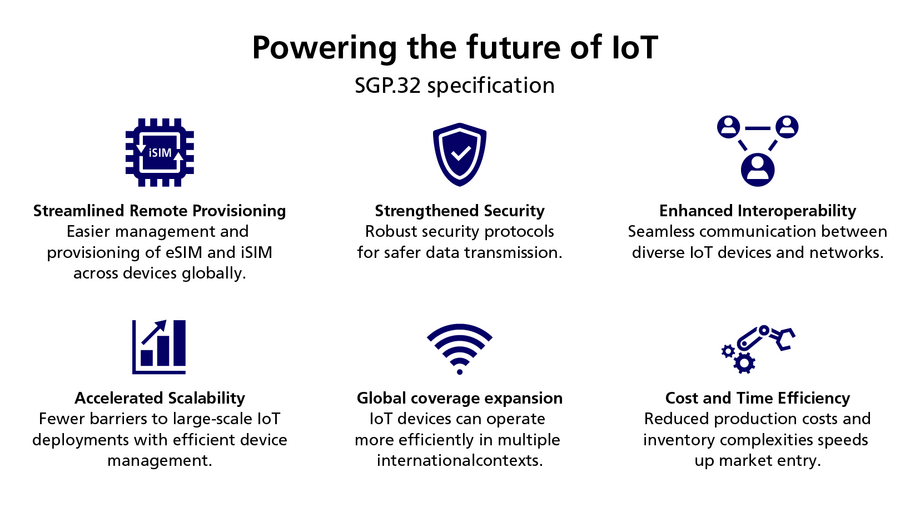SGP.32: the next evolution in IoT
SGP.32 is a new remote provisioning specification that was released by the GSMA in May 2023. Technologically, it is not too different from the SGP.22 consumer specification; however, from a deployment perspective it is designed for headless M2M/IoT applications.
The new specification facilitates the remote loading, activation, and management of eSIM subscriptions for IoT devices in the field. Moving away from the SMS-based communication of its predecessor, SGP.32 employs a faster, more reliable IP-based protocol. This shift enhances the efficiency of managing IoT devices and provides a more flexible approach to cellular connectivity management across the device’s life cycle. The new specification also has the potential to drastically reduce operational costs and enable rapid scaling across different regions, bolstered by the integration of globally pre-connected stock-keeping units (SKUs), which streamline the deployment process for a vast range of IoT devices.
All of this is managed on a central management platform, such as G+D’s AirOn360® IoT Suite, an all-in-one solution that streamlines the RSP of SIM profiles, regardless of device type, region, and network. This increased interoperability between devices and networks will eliminate many of the logistical challenges associated with managing large IoT fleets; it can also be a significant catalyst for growth in the future.
But what does the emergence of SGP.32 mean for older devices compliant with previous specifications? In short: nothing.
The AirOn360® IoT Suite supports all GSMA specifications – not just the new SGP.32 – meaning that both consumer and M2M/IoT devices can be managed within the same suite. This is especially valuable for companies who already have existing device fleets operating on the SGP.02 specification – for example, a smart meter company. Rather than having to replace all their existing devices with newer ones operating on SGP.32 – a costly and resource-heavy undertaking – they can manage both simultaneously on a single platform. That way they can upgrade their fleet and transition to SGP.32-compatible devices over time, based on operational needs, rather than on regulatory or technological necessity.
And as more and more compatible devices are released, organizations will have more flexibility of choice for their IoT deployments, in terms of both compatible devices and eSIM profiles. This puts organizations in a better position to find the most suitable connectivity solutions for their needs, further driving the advancement and applicability of IoT across industries.





